How to design an effective corporate showroom: experiential spaces that tell your brand identity
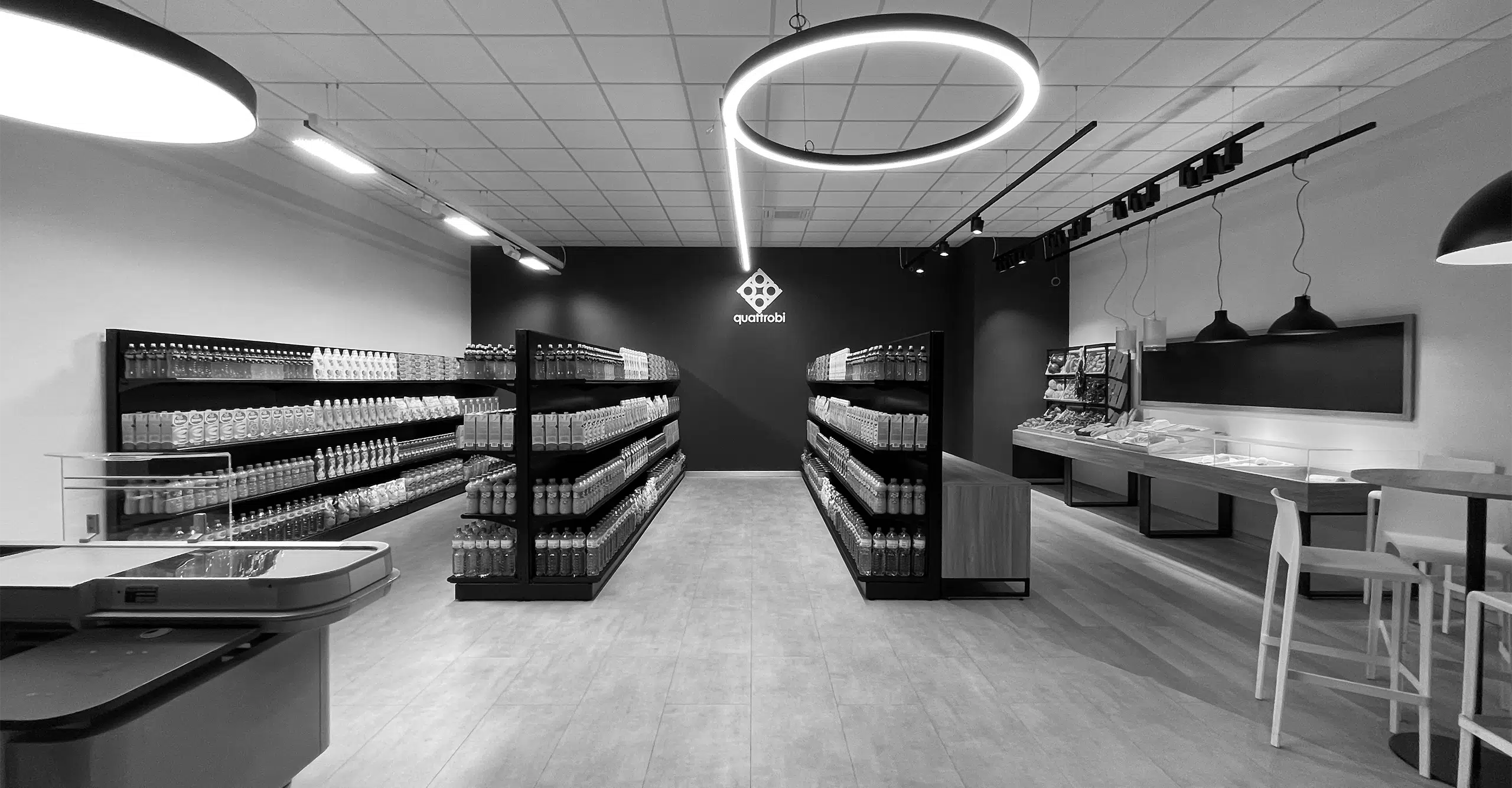
Experiential spaces that tell the story of your brand identity
In an age when everything is digital, the corporate showroom remains one of the most powerful places to communicate the true essence of a brand. It is not just a place to display products: it is a immersive environment, a living space where values, style and vision are transformed into a tangible experience for clients, architects, buyers and partners.
Whether it’s a tech company, a sports brand or a lighting manufacturer, a well-designed showroom doesn’t just sell a product: it conveys a culture.
But how do you design a truly effective showroom?
What elements distinguish an ordinary showroom space from an environment that engages, persuades and generates value?
In this guide, we explore:
- The strategic functions of the showroom in the sales funnel and brand strategy;
- I design principles That guide effective design;
Some concrete examples signed Espositiva, such as X-Bionic, Quattrobi and Neff. See an in-depth here
The showroom as a strategic branding and sales lever
The showroom is (no longer) just a “representative” space. It is a strategic device Which can:
- Reinforce brand positioning,
- Generate qualified leads,
- Shorten the sales cycle,
- Increase customer loyalty.
When designed with care, the showroom becomes an immersive environment that showcases corporate values, translates product quality into tangible emotion, and guides the visitor through a coherent and sensory narrative.
From product to meaning
A good showroom goes beyond the aesthetics of the product: it shows the function, the effectiveness, the uniqueness. That is where the transition from object to meaning takes place.
A lighting system is not just looked at: it is live, one experiences it in its ability to enhance environments.
A technical sports garment is not only touched: it is perceives itself as an extension of the body, as an instrument of performance.
The value of "seeing it live"
In a world dominated by photos, video and eCommerce, the physical experience generates engagement, memory and trust. An effective showroom reduces the gap between brand and customer, turning the visit into a a powerful decision-making moment.
Therefore, the showroom becomes a central hub in the omnichannel journey: a point where branding, product, communication and relationship converge.
Goals and functions: what a showroom really needs to do
Designing a showroom means more than just “setting up a space well.” It means Clearly define the strategic goals that this environment needs to achieve, and translate them into consistent design, layout and communication choices.
A well-designed corporate showroom is never generic. It is always built on precise functions.
Telling the brand identity
A showroom must embody the value system and the positioning of the company:
- What tone do you want to convey? Technical, emotional, elegant, irreverent?
- What experience do you want to bring to life? Immersive, functional, sensory?
Everything-from materials to the rhythm of space, from light to copy-must contribute to make the invisible visible: your corporate culture.
Showing the product in context
The visitor must not “look” at the product. He must seeing it in action:
- A lamp must illuminate a real scene.
- A piece of furniture should be set as in a real house.
- A sports garment must convey dynamic tension.
The showroom is effective when it it simulates the context of use real of the product. When it makes the object useful, alive, desirable.
Fostering the
business relationship
The showroom should include areas that encourage personal relationships:
- Corner for consulting or technical presentation.
- B2B meeting tables.
Reserved spaces for tests, demos, videos or digital configurators.
In these spaces, conversation becomes part of the experience.
Design and layout: designing the space to activate the brand
A showroom works when it is thought of as a narrative environment: a space that guides the visitor along an immersive journey, consistent with the brand’s message and values.
It is not just about “showcasing” products: the layout must tell a story, evoke emotions and facilitate understanding of value.
Layout as physical storytelling
Every design choice should answer a question:
- What do I want the visitor to perceive first?
- What is the time when he needs to stop, explore, deepen?
- Where there must be surprise, where confirmation, where interaction?
The design of the spaces follows a narrative logic, where each element-color, light, materials, pathways- accentuates a passage of meaning.
Light and materials in the service of storytelling
Light is not only a functional element: it is a scenic tool that gives rhythm and focuses attention.
Materials, on the other hand, convey quality, warmth, performance, sustainability, depending on the brand.
The design of an effective showroom comes from the meeting of intention and perception: what the company wants to communicate and what the visitor needs to feel.
Modularity, updating, interaction
A good showroom is modular e adaptable:
- Must be able to be updated easily (e.g., mobile panels, digital content, interchangeable graphics).
- It must include interactive elements, digital or physical, to stimulate engagement (e.g., touchpoints, VR, QR codes, demos).
The goal is to to make the showroom alive over time, not a static set design.
Concrete examples: 3 showrooms that tell the brand story
Each showroom is born out of a dialogue between brand and space. Here we recount three projects in which Espositiva transformed a business need into an immersive, effective and memorable experience.
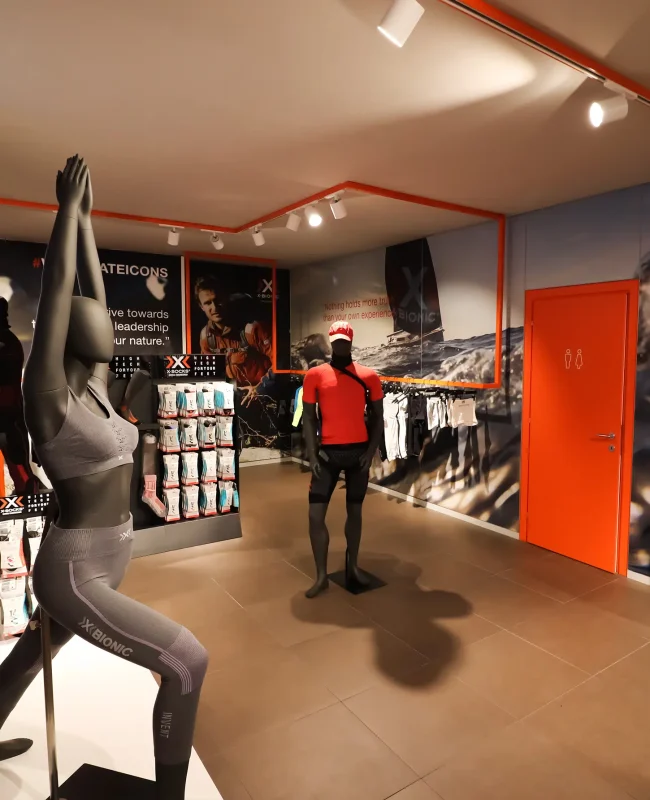
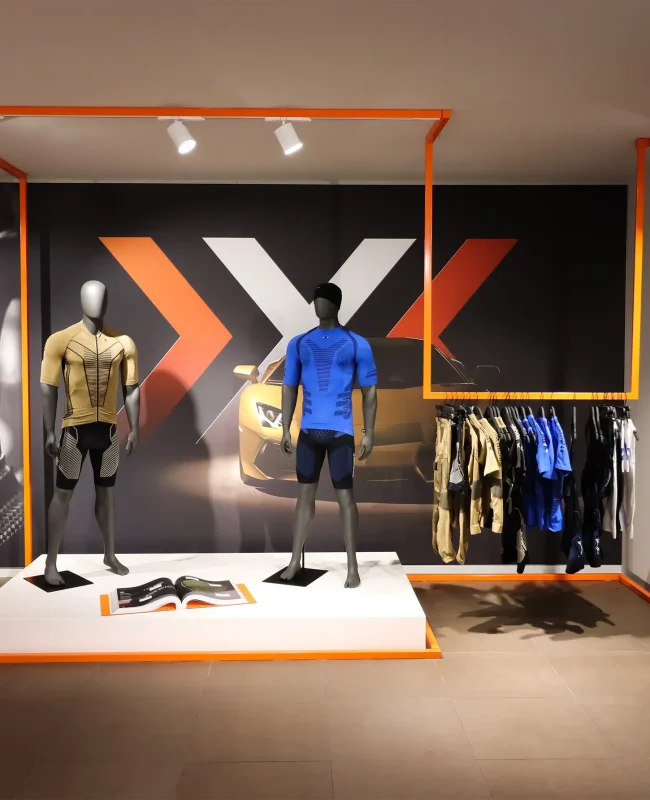
X-BIONIC® - A showroom that runs fast
X-BIONIC® is a brand of high-performance technical apparel devoted to maximum innovation for those who live sports as a daily challenge. The showroom designed by Espositiva is designed to transmit energy, velocity and dynamic tension.
- The layout is directional: it guides the visitor along a progression of performance.
- The technical materials and glossy surfaces reflect the brand’s hi-tech aesthetic..
- The entire space is built to tell the story of the product not only in design, but in its function: pushing beyond the limits.
Result: An environment consistent with brand positioning, capable of captivating both athletes and business partners.
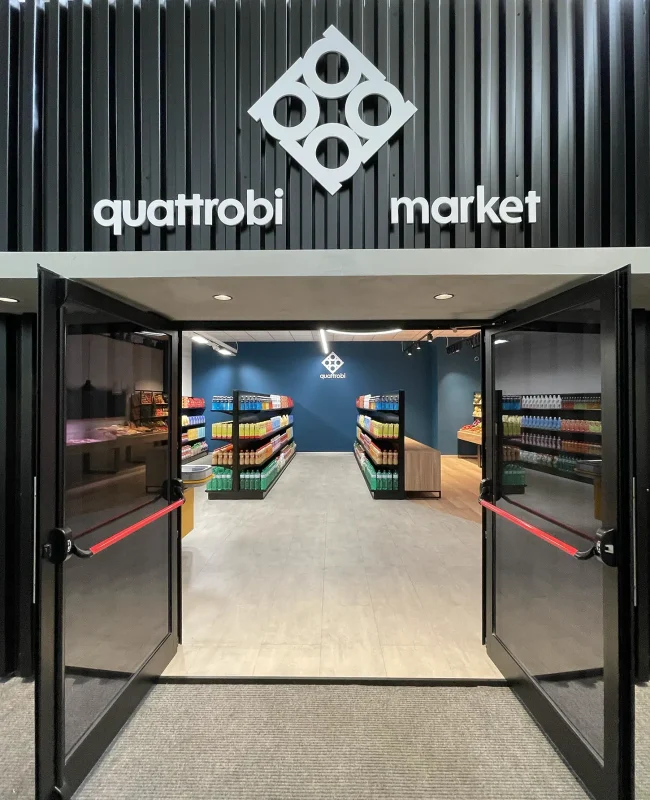
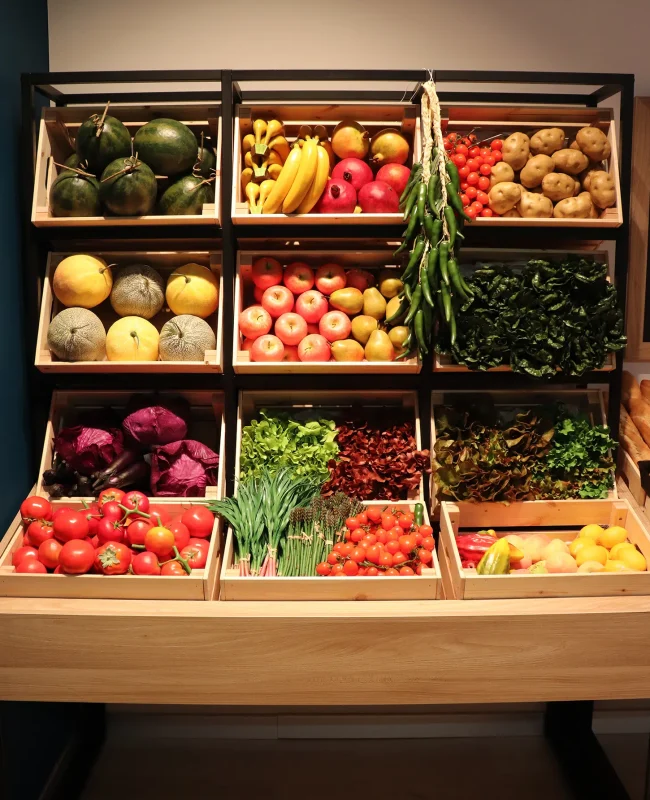
Quattrobi Market - Light in operation
Quattrobi is an architectural lighting company. To showcase the real light rendering, called for an experiential concept. Espositiva designed an immersive environment: an educational supermarket where architects and designers can observe the behavior of light on materials, shapes, products.
- Each department is lit differently to enhance colors and textures.
- The visitor can compare different technologies in real-life contexts.
- The experience is concrete, useful and memorable.
Result: a showroom that goes beyond exposure and becomes a educational and relational tool.
Neff Rome - Design and functionality in balance
Lo Neff showroom in Rome, which Espositiva oversaw, is a space designed to integrate aesthetics, ergonomics and brand storytelling.
- The design is reminiscent of the kitchen world refined yet accessible.
- Neff products are placed in real settings, to allow retailers and visitors to imagine their use on a daily basis.
- The lighting and layout of the spaces highlight technical details and distinctive pluses.
Result: an elegant, yet deeply functional store for sales and staff training.
The mistakes to avoid when designing a showroom
Designing a showroom is not easy. Too often, even structured companies commit choices that thwart the investment, because the space does not work, communicate or engage.
Here are the 5 most common mistakes that Expositive helps you avoid in every project:
Think of the showroom as a physical catalog
A showroom is neither a neat warehouse nor a technical showcase. When the space is just a static display of products, does not generate experience or emotion. The visitor does not connect, does not remember, does not desire.
Do not define clear objectives
Each showroom should answer questions such as:
- What do we want the visitor to do, to understand, to feel?
- Do we want to generate leads, train, amaze?
Without clear objectives, the risk is designing a generic and ineffective space.
Underestimating the quality of light
A serious and frequent mistake. A wrong light can:
- belittle the product,
- Distorting colors,
- Make the environment unpleasant or inconsistent with the brand.
Espositiva always works in synergy with lighting designers and technicians to ensure light that tells and enhances.
Neglecting integration with digital channels.
The showroom does not live alone: it must dialogue with site, social, configurators, CRM. Don’t anticipate QR code, interactive content or lead tracking means missing an opportunity to extend the experience.
Designing a space that "ages" after six months
Trends, products, collections change quickly. If the showroom is not designed with a modular and upgradeable logic, will require expensive and complex interventions. Expositive always works on systems flexible and intelligent.
Conclusion
A showroom is not just a physical environment: it is a concrete extension of your brand. That is where the visitor becomes a customer, the product becomes an experience, the identity becomes a narrative.
Designing an effective showroom means staging your value, transforming the space into a relationship, sales and positioning tool.
Whether it is technology, lighting, food, sports or design, every brand needs a space that represents it with precision and personality. Go to the dedicated section.
At Espositiva, we design showrooms conceived to last, evolve and engage, built together with the customer in every detail.
👉 Are you planning a new showroom? Or do you want to transform an existing space into a more strategic environment?
Contact us for a tailor-made consultation. We will be happy to imagine with you the showroom that really tells who you are.
FAQ - Frequently asked questions about showroom design
How long does it take to design and implement a corporate showroom?
It depends on complexity and area: an average project can take 6 to 12 weeks, including concept, layout, render, production, and staging.
How much does it cost to design a professional showroom?
The budget varies according to materials, technologies used, and size. At Espositiva, we build tailor-made quotes, with a modular and scalable approach.
Can a showroom be easily updated over time?
Absolutely, if designed intelligently. We use Modular structures, interchangeable graphics and upgradeable technologies to ensure maximum flexibility
Can I integrate digital tools such as tablets, configurators, or augmented reality?
Indeed. Our approach involves the native integration of digital elements to extend the experience and collect valuable data from visitors.
Do you have experience in specific areas?
Yes: from sports performance (X-BIONIC®) to food technology (Neff) to lighting design (Quattrobi). Each project starts from the brand identity and is developed together with the client.
With Espositiva, every space
becomes an extraordinary experience.